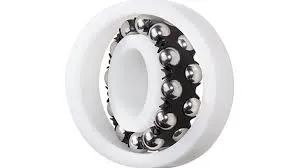
Nov . 07, 2024 19:42 Back to list
Exploring the Benefits and Applications of Deep Groove Roller Bearings in Engineering
Understanding Deep Groove Roller Bearings A Comprehensive Overview
Deep groove roller bearings are among the most widely used types of rolling element bearings in various applications. Their simple design, robustness, and versatility make them an essential component in many industries, from automotive to manufacturing and aerospace. This article delves into the characteristics, advantages, applications, and maintenance of deep groove roller bearings, providing a thorough understanding of this critical engineering component.
What are Deep Groove Roller Bearings?
Deep groove roller bearings consist of an inner ring, an outer ring, a set of rollers or balls, and a cage that holds the rollers in place. The geometry of the bearing features deep raceways, which accommodate higher radial and axial loads than shallow groove bearings. The rollers or balls significantly reduce friction between the bearing elements, allowing for smoother operation and extended lifespan.
The deep groove design enables these bearings to handle not only radial loads but also a degree of axial loads in both directions, making them a versatile choice for various mechanical applications. They can be made from various materials, including steel, stainless steel, and ceramic, depending on the operating conditions and load requirements.
Benefits of Deep Groove Roller Bearings
1. Versatility One of the primary advantages of deep groove roller bearings is their ability to accommodate both radial and axial loads. This characteristic makes them suitable for a wide range of applications, from electric motors to automotive components.
2. High Load Capacity The deep raceway design and strong construction allow these bearings to support higher load capacities compared to shallower designs. This feature is particularly important in heavy machinery and equipment where durability is paramount.
3. Low Friction and Heat Generation The rolling motion of the rollers or balls drastically reduces friction, resulting in lower heat generation during operation. This property enhances energy efficiency and prolongs the bearing's lifespan.
4. Easy Installation and Maintenance Deep groove roller bearings are relatively easy to install and maintain, making them user-friendly for various engineers and technicians. Regular maintenance, such as lubrication and inspection, can significantly extend their operational life.
5. Standardization Many manufacturers produce deep groove roller bearings according to international standards, ensuring compatibility and interchangeability between different brands and models. This standardization simplifies procurement and replacement processes.
Applications of Deep Groove Roller Bearings
Due to their unique characteristics, deep groove roller bearings find application across diverse industries. Some notable uses include
- Automotive They are commonly used in wheels, gearboxes, and engine components due to their ability to handle both radial and axial loads effectively.
deep groove roller bearing

- Electric Motors These bearings support the rotor shaft, ensuring smooth operation and minimizing friction, which is critical for efficiency.
- Industrial Machinery From conveyor systems to pumps and compressors, deep groove roller bearings are essential in various types of machinery for their reliability and performance.
- Aerospace In the aviation industry, lightweight and high-strength materials are crucial. Deep groove roller bearings made from advanced materials are used in various aircraft components to enhance safety and efficiency.
- Consumer Electronics They are also found in household appliances and gadgets, ensuring quiet and reliable operation.
Maintenance Tips
To ensure the longevity and optimal performance of deep groove roller bearings, it is essential to follow proper maintenance practices
1. Regular Inspection Regularly inspect bearings for any signs of wear, such as unusual noises, heat generation, or vibration. Early detection of issues can prevent catastrophic failures.
2. Proper Lubrication Ensure that the bearings are adequately lubricated. The choice of lubricant—whether grease or oil—depends on operating conditions, including temperature and speed.
3. Avoid Overloading Ensure that the load on the bearings does not exceed their rated capacity to prevent premature failure.
4. Temperature Monitoring Keep an eye on temperature changes during operation. Excessive heat can indicate underlying issues that need to be addressed.
5. Environmental Protection Protect bearings from dust, dirt, and moisture; they can significantly affect their performance and lifespan.
Conclusion
Deep groove roller bearings are a vital component in numerous mechanical systems due to their versatility, high load capacity, and low friction characteristics. Understanding their benefits, applications, and maintenance is crucial for engineers and technicians working across various industries. With proper care and installation, these bearings can provide reliable service and enhance the performance of the machinery they support. As technology advances, we can expect even more innovations in bearing design and materials, further expanding their applications and efficiency.
Latest news
-
Grooved Ball Bearing Design and Functionality
NewsJun.04,2025
-
Concrete Mixer Bearing Load Capacity Testing
NewsJun.04,2025
-
6004 Bearing Dimensions in Robotic Joint Designs
NewsJun.04,2025
-
Advantages of Single-Row Deep Groove Ball Bearings
NewsJun.04,2025
-
Applications of Deep Groove Ball Bearings in Automotive Systems
NewsJun.04,2025
-
Innovations in Bearing Pressing Machine Design
NewsJun.04,2025
